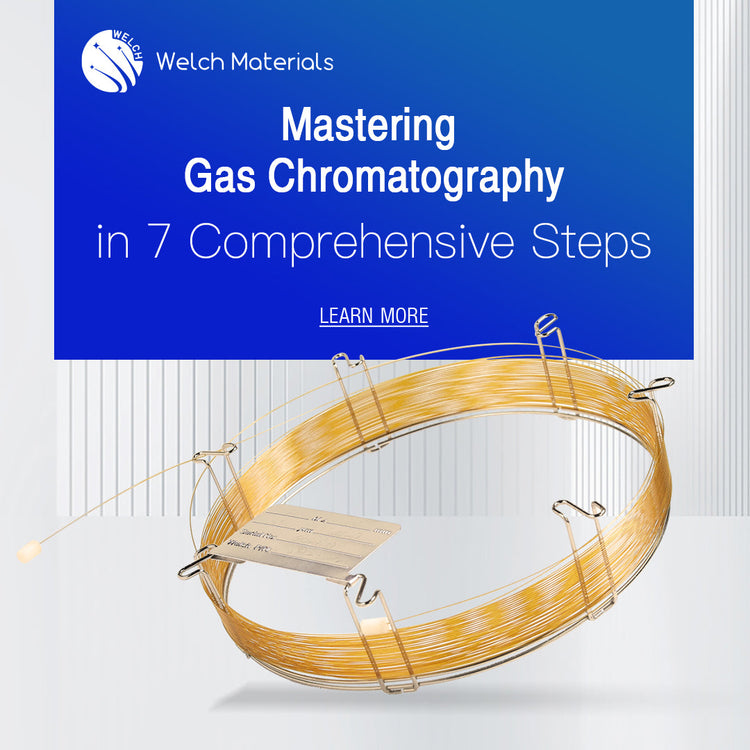Introduction
The advantage of gas chromatography (GC) lies in its ability to separate and analyze mixtures of multiple components—capabilities that spectroscopy and mass spectrometry alone cannot achieve.
However, because many substances can be subjected to chromatographic analysis, different components may elute at the same time on a given stationary phase. Relying solely on retention times for qualitative identification of unknowns can therefore present challenges.
For an unknown sample, one must first ascertain its origin, properties, and analytical objectives; on that basis, an initial hypothesis about its composition may be formed. Then, by comparing with known pure substances or relevant chromatographic reference data, qualitative identification can be carried out using appropriate methods.
1. Sample Source and Pretreatment
GC can directly analyze gaseous or liquid samples. Solid samples must be dissolved in a suitable solvent and free of components that GC cannot tolerate (e.g., inorganic salts), which could damage the column.
When receiving an unknown sample, you must learn its origin to estimate potential constituents and their approximate boiling range. If the sample matrix is simple and its components are volatile, direct analysis is possible. If it contains non‑volatile components or is at too low a concentration, pretreatment—such as adsorption, thermal desorption, extraction, concentration, dilution, purification, or derivatization—is required.
2. Instrument Configuration
Instrument configuration refers to the combination of injection device, carrier gas, column, and detector used for analysis.
- Detector selection: For hydrocarbons, an FID is typical; for compounds rich in electronegative groups (F, Cl, etc.) and low in hydrocarbons, an ECD is preferred; when sensitivity demands are low or non‑hydrocarbons are present, a TCD may suffice; for sulfur‑ or phosphorus‑containing analytes, an FPD is ideal.
- Injection method: Liquids generally use a septum inlet; gases may employ a six‑port valve or sorbent‑thermal desorption. As many systems feature only septum injection, gaseous samples are often processed via sorbent trapping, followed by solvent desorption, then septum injection.
- Column selection: Choose a column based on the analyte’s polarity—nonpolar columns for nonpolar compounds, polar columns for polar compounds. After selecting the stationary phase, set the column temperature: simple mixtures often use isothermal operation; complex mixtures with widely varying partition coefficients require temperature programming.
- Carrier gas: Common carrier gases include hydrogen, nitrogen, and helium. Hydrogen and helium, having low molecular weight, suit packed columns; nitrogen, with higher molecular weight, is typical for capillary GC; helium is universally used when coupling GC to MS.
3. Establishing Initial Operating Conditions
Once the sample is ready and the instrument configured, trial separations begin. Set initial conditions, including injection volume, inlet temperature, detector temperature, column temperature, and carrier‑gas flow rate.
The injection volume depends on sample concentration, column capacity, and detector sensitivity. For packed columns, when sample concentration ≤10 mg/mL, inject 1–5 µL; for capillary columns with a 50:1 split ratio, inject no more than 2 µL.
The inlet temperature is determined by the boiling range of the sample—ideally near the highest‑boiling component but below its decomposition temperature—and must also respect the column’s maximum allowable temperature.
4. Optimizing Separation Conditions
The goal of optimization is to achieve the required separation in the shortest possible time. If baseline resolution cannot be attained by adjusting column temperature or carrier‑gas flow, a longer column or a column with a different stationary phase should be employed, since the column is critical to separation performance in GC.
5. Qualitative Identification
Qualitative identification determines which peak corresponds to which component. For simple samples, compare retention times under identical chromatographic conditions by injecting both standard and unknown samples—the retention time then identifies the analyte.
Note that different compounds can share identical retention times on a single column, so relying on a single retention measurement is insufficient. Utilizing two or more columns with different stationary phases to determine retention indices provides more reliable identification, since it is much rarer for different compounds to share identical retention times on multiple columns.
When possible, coupling GC with MS offers definitive qualitative confirmation.
6. Quantitative Analysis
Select an appropriate quantitation method—peak‑area (or peak‑height) percent, normalization, internal standard, external standard, or standard addition.
The area‑percent method is simplest but least accurate, suitable only for homologous series or rough estimates.
The internal‑standard method offers the highest precision by calibrating responses relative to a compound added equally to standards and samples, thereby compensating for variations in injection volume and other operational parameters.
The standard‑addition method adds a set quantity of analyte standards to the unknown sample, then calculates via the addition in peak area or height. It resembles the internal‑standard approach in sample preparation but follows external‑standard calculation principles; its accuracy lies between the internal‑ and external‑standard methods.
7. Method Validation
Method validation demonstrates the procedure’s practicality and reliability. Practicality assesses whether all instrument components are commercially available, whether sample preparation is straightforward, whether analysis time and cost are acceptable to peers, and so forth. Reliability encompasses linear dynamic range, detection limit, recovery, repeatability, reproducibility, and accuracy.
Summary
As a mainstream modern analytical technique, gas chromatography is conceptually straightforward yet demands rigorous procedures. Every step—from gas supply and instrument setup to environmental conditions—has precise requirements. Only by fully understanding these requirements can one employ GC efficiently and effectively.

